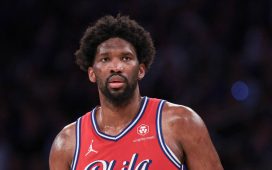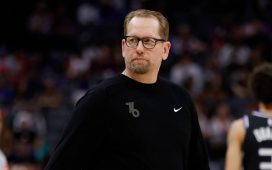Starting today, I hope to be able to give insight into the NBA and the basketball world in general from two perspectives. These viewpoints have been shaped first by my work as a founding writer and later editor for The Nylon Calculus and more recently as the Director of Basketball Research for the Milwaukee Bucks during the last three seasons.
My primary focus will be illuminating the NBA and basketball as a whole through the lens of analytics, including discussing what the term “analytics” even means. It’s not just “shoot a bunch of 3 pointers,” but we’ll get to that in due course.
Secondly, I hope to provide some visibility into how decisions actually get made based on my own experiences as well as discussions with colleagues from around the league. While I’m obviously not going to get into the specifics of who said what and when in my time with the Bucks, the breadth of information an NBA coach or GM must consider in making any sort of move might surprise you.
So, you might ask why I’m going from there to here?
Let me explain this the best I can. I’ve often said that I couldn’t answer the question of what it was like to have my “dream job” because I never dreamed that one could make a living investigating, arguing about and then acting upon sports statistics. What was originally a hobby I could do while watching my newborn daughter (now almost six) suddenly became a passion, then an opportunity and then a career.
So though it didn’t come to me in a dream, working for the Bucks has been a tremendous experience over the past three seasons, and I can’t thank both John Hammond, who originally hired me, and Jon Horst, who kept me on, enough for the opportunity.
The experiences I’ve had being “inside” are non-replicable. However, one thing I’ve learned over this time is the distinction between working in basketball and working on basketball. Working for a team is much more about application than discovery. Originally, I thought that the competition between teams and organizations would be the most rewarding possible expression of my hobby-turned-work. But as David Epstein puts it in his marvelous new book, “Range”:
“We learn who we are in practice, not in theory.”
I came to find out that, at least at this point in my life, competition itself isn’t as central to me as it once was. (Especially by comparison to some of my co-workers. Looking at you, Buckets.) Instead, I was most drawn by exploration and investigation. Discovery.
Discovery can be haphazard. It is best attempted collaboratively. Most approaches fail. Timelines and use cases are often ambiguous. In the zero-sum competitive world of top-level sports, any one of those factors can be a deal breaker.
Though shifting the focus of statistical analysis to communication and presentation was a stimulating challenge, I found myself missing discovery. Not just the results, but the process. The discussions with like-minded peers. The trial and error. Open-ended lateral thinking. In practice, that is what is important to me at this point.
Which, in a roundabout way, is what brings me here.
I look forward in the weeks and months ahead to research, share and discuss. Many of the best innovations result from combining pieces from many disciplines. So whether it’s applying the insights gleaned from a dissection of a quarterback’s passing decisions to a young point guard figuring out his reads in the pick-and-roll, examining how lessons from industrial economics can illuminate team chemistry or simply identifying what we do (and more importantly don’t) know about shot defense, I’m here to dig in and hopefully help you all discover new things about basketball along with me.
If you haven’t subscribed yet, join now for $2.99 per month and get 40% off with this link: theathletic.com/welcomeseth
(Top photo courtesy of Sara Rubinstein)






